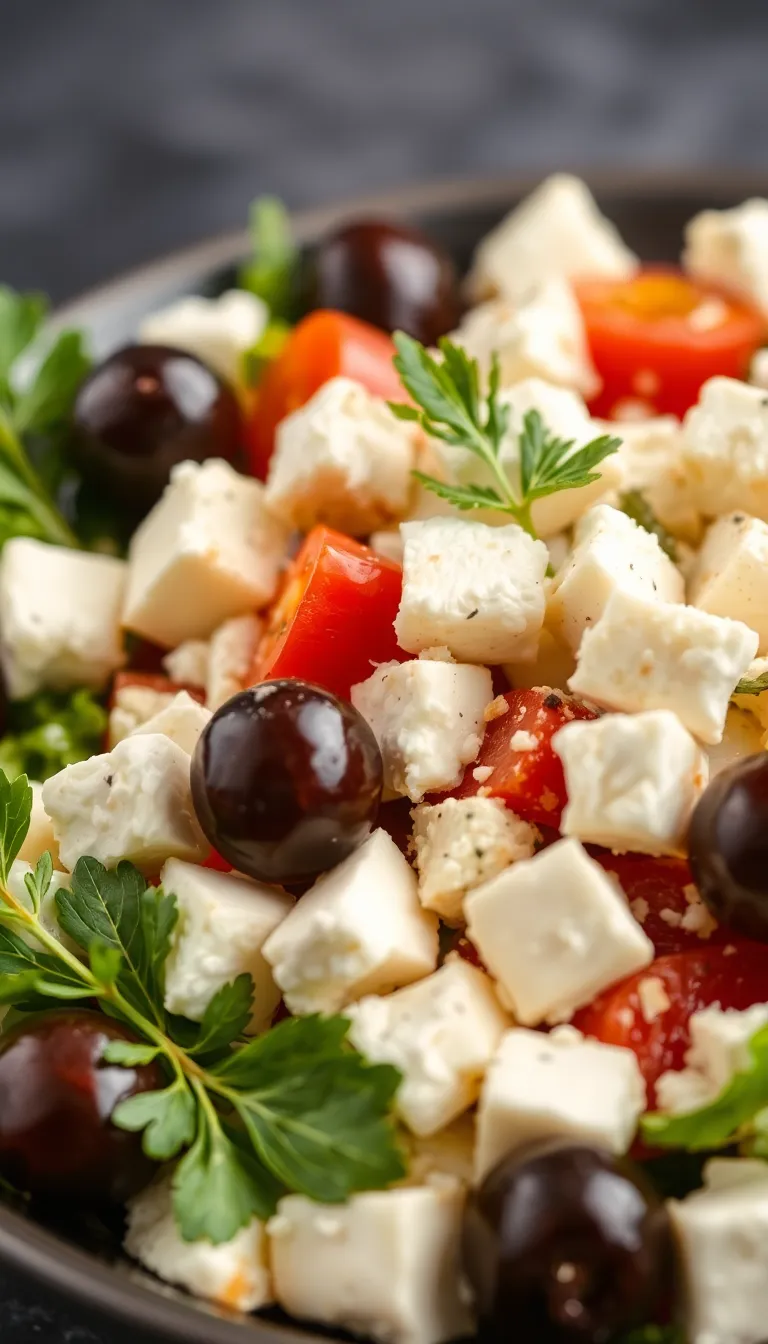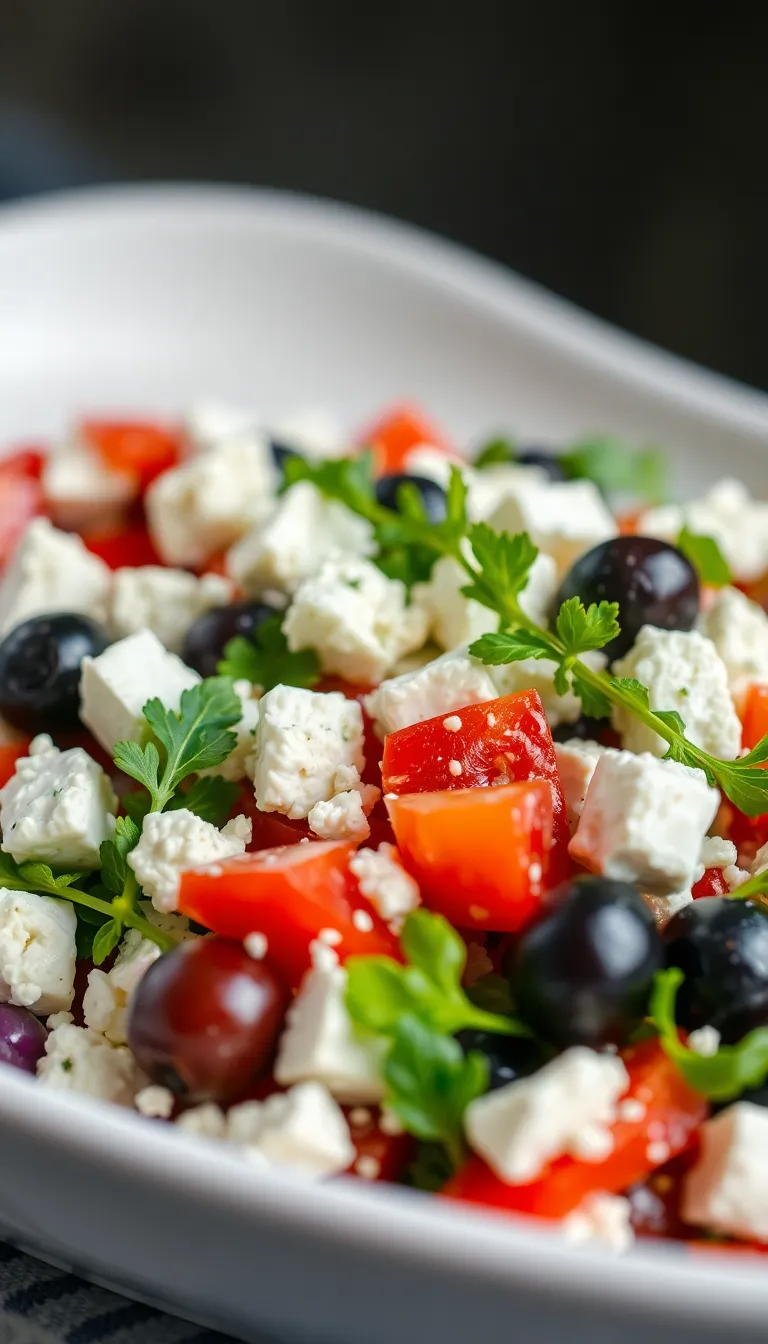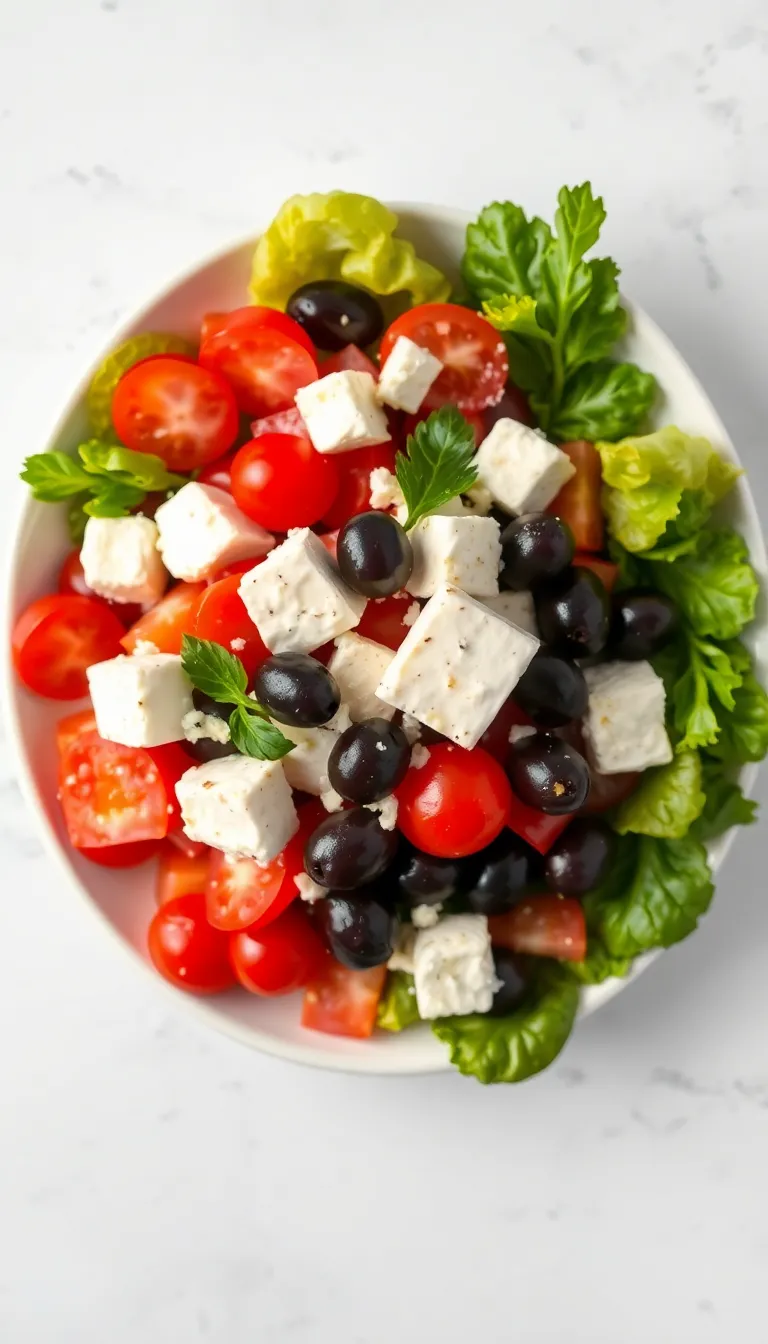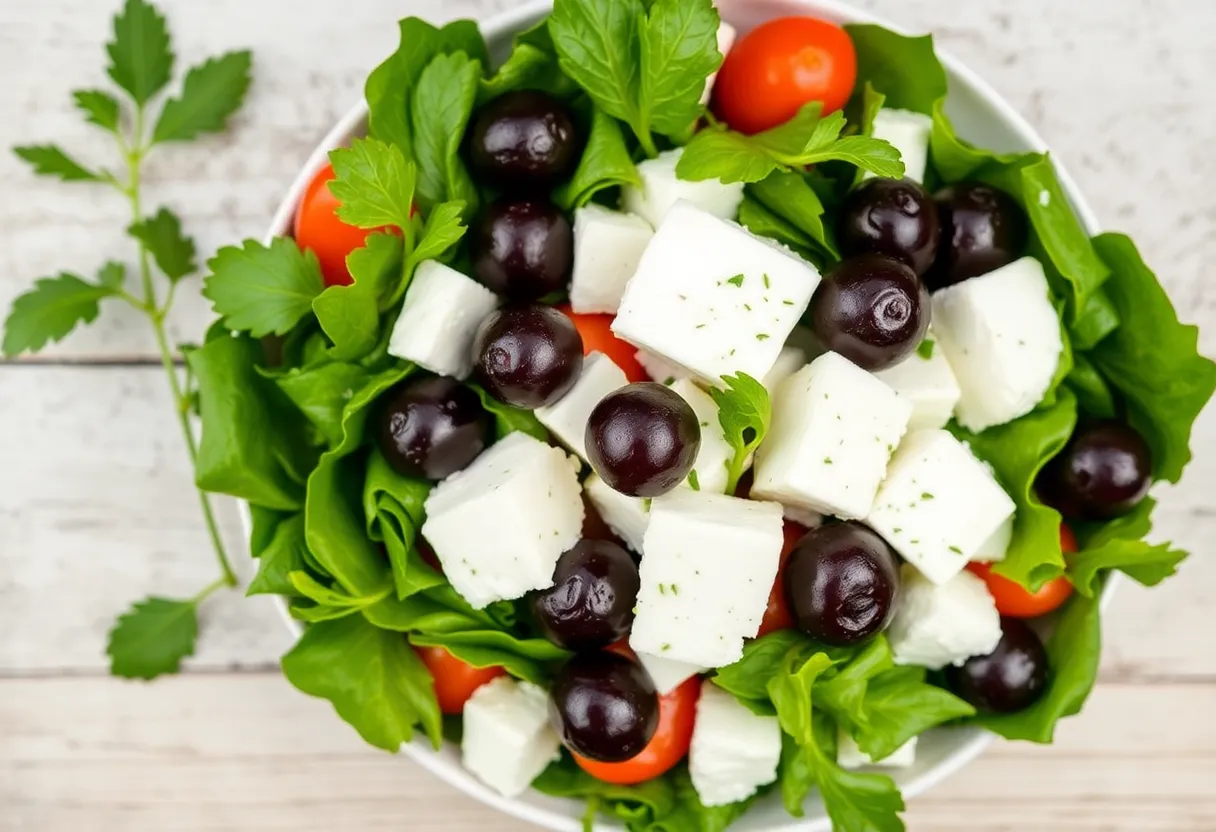Greek Salad with Feta & Olives: The Ultimate Mediterranean Flex
You want a salad that doesn’t taste like punishment? Greek salad is your answer. No sad lettuce, no questionable dressings—just crisp veggies, briny olives, creamy feta, and a dressing so simple it’s embarrassing.
This isn’t just a side dish; it’s a main character. Perfect for meal prep, picnics, or pretending you’re on a Santorini balcony. Ready to make a bowl that actually gets eaten?
Let’s go.
Quick Recomendation: Our blog is full of useful information to inspire you. If you are seeking a healthy way to prepare your meals, we recommend this Keto product
Why This Greek Salad Slaps

First, it’s stupidly easy. Chop, toss, done. No cooking, no fancy techniques.
Second, the flavors are bold but balanced—tangy feta, salty olives, sweet tomatoes, and a zesty dressing. Third, it’s versatile. Eat it alone, stuff it in pita, or pair it with grilled meat.
And let’s be real: it looks Instagram-worthy without trying. Who doesn’t love a salad that does the work for you?
Ingredients (No Surprises Here)
- 1 large cucumber, chopped (peel if you’re fancy)
- 4 ripe tomatoes, chunky dice
- 1 red onion, thinly sliced (soak in water if you hate raw onion breath)
- 1 green bell pepper, sliced
- 1 cup Kalamata olives, pitted (or don’t—live dangerously)
- 200g feta cheese, cubed (real feta, not the crumbled chalk stuff)
- 2 tbsp extra virgin olive oil
- 1 tbsp red wine vinegar
- 1 tsp dried oregano
- Salt and pepper, to taste
How to Make It (Without Messing Up)

- Chop everything uniformly. Nobody wants a tomato chunk the size of a tennis ball.
- Combine veggies and olives in a big bowl. Toss gently—this isn’t a wrestling match.
- Whisk olive oil, vinegar, oregano, salt, and pepper in a small bowl.
Taste it. Adjust if needed.
- Pour dressing over the salad and toss again. Keep it light; you’re dressing a salad, not drowning it.
- Add feta on top (don’t mix it in yet—it’ll turn to mush).
- Let it sit for 10 minutes before serving.
Patience is a virtue, especially with salads.
How to Store It (Because Leftovers Happen)
Keep it in an airtight container in the fridge for up to 2 days. The veggies will soften, but it’s still tasty. Pro tip: Store feta separately if you’re prepping ahead.
FYI, this salad doesn’t freeze well—unless you enjoy soggy, defrosted cucumbers.
Why This Salad is Basically a Superfood

It’s packed with antioxidants (thanks, tomatoes), healthy fats (olive oil and olives), and probiotics (feta). Low-carb, gluten-free, and vegetarian-friendly. Plus, it’s hydrating (looking at you, cucumber).
IMO, it’s the perfect balance of nutritious and delicious—no “health food” vibes here.
Common Mistakes (Don’t Be That Person)
- Using unripe tomatoes. They’re the star—don’t insult them.
- Over-dressing the salad. You’re not making soup.
- Crumbling the feta too early. It turns into a sad, creamy mess.
- Skipping the resting time. Flavors need to mingle, like a good party.
Alternatives (Because Rules Are Made to Be Broken)

- No feta? Try halloumi or goat cheese.
- Vegan? Swap feta for tofu or omit it.
- Add protein: Grilled chicken, shrimp, or chickpeas turn it into a meal.
- Extra crunch: Throw in some toasted pine nuts or sunflower seeds.
FAQs (Because People Overcomplicate Salads)
Can I use black olives instead of Kalamata?
Sure, but Kalamata olives have that authentic Greek flavor. Black olives work in a pinch, but expect a milder taste.
How do I make it less acidic?
Use less vinegar or add a pinch of sugar to the dressing. Or just embrace the tang.
Can I add lettuce?
Technically yes, but traditional Greek salad doesn’t include it.
IMO, it waters down the flavors.
Why is my salad soggy?
You probably dressed it too early or over-mixed it. Toss right before serving next time.
Final Thoughts
Greek salad is the MVP of no-cook meals. It’s fresh, flavorful, and foolproof.
Whether you’re meal-prepping or impressing guests, this recipe delivers. And if you mess it up? Congrats—you’ve invented a new dish.
Now go eat like a Mediterranean god.
Quick Recomendation: Our blog is full of useful information to inspire you. If you are seeking a healthy way to prepare your meals, we recommend this Keto product






